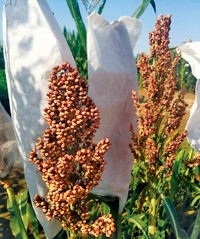Advertisement
Grab your lab coat. Let's get started
Welcome!
Welcome!
Create an account below to get 6 C&EN articles per month, receive newsletters and more - all free.
It seems this is your first time logging in online. Please enter the following information to continue.
As an ACS member you automatically get access to this site. All we need is few more details to create your reading experience.
Not you? Sign in with a different account.
Not you? Sign in with a different account.
ERROR 1
ERROR 1
ERROR 2
ERROR 2
ERROR 2
ERROR 2
ERROR 2
Password and Confirm password must match.
If you have an ACS member number, please enter it here so we can link this account to your membership. (optional)
ERROR 2
ACS values your privacy. By submitting your information, you are gaining access to C&EN and subscribing to our weekly newsletter. We use the information you provide to make your reading experience better, and we will never sell your data to third party members.
Biological Chemistry
Evolution Of Rose Aroma Explained
Mutation produces enzyme that makes scent production efficient
by Sophie L. Rovner
April 17, 2008

Take one sniff of a Chinese rose or a tea rose and you might think of black tea. Researchers in France now report that this signature scent evolved naturally as a result of a mutation that enables the production of two slightly different versions of an enzyme involved in aroma formation.


The French work is "very innovative," says Efraim Lewinsohn, who investigates aroma generation in roses and other plants at Israel's Agricultural Research Organization in Ramat Yishay.
Philippe Hugueney, who studies evolution's impact on plant metabolism at the Ecole Normale Supérieure de Lyon, and colleagues performed the research (Proc. Natl. Acad. Sci. USA, DOI: 10.1073/pnas.0711551105). Lyon, Hugueney notes, is an important rose-breeding city, in which the first hybrid tea rose was developed in 1867.
Modern tea roses are derived from crosses between tea-scented Chinese roses and hardier species from Europe, which have a floral rather than a tealike odor. Hybrid tea roses inherited the ability to produce tea scent from their Chinese forebears.
The major component of tea aroma is 3,5-dimethoxytoluene (DMT). Lewinsohn and his colleagues previously showed that DMT production is catalyzed by two orcinol O-methyltransferase (OOMT) enzymes, known as OOMT1 and OOMT2.
Hugueney's new research shows that genes for OOMT2 exist in all rose types, but OOMT1 genes are present only in Chinese roses and their progeny. In Chinese and tea roses, the two enzymes sequentially carry out an efficient conversion of orcinol into DMT. Because European roses lack OOMT1 and don't express the OOMT2 gene in their scent-generating petals, they are unable to produce DMT and therefore fail to smell like tea.
Hugueney and his colleagues determined that the active sites of OOMT1 and OOMT2 differ by a single amino acid and that OOMT1 genes evolved from OOMT2 genes. This evolution was a key step in the natural development of tea scent in wild Chinese roses, Hugueney says. "This study provides a beautiful example of how a tiny change at the gene level can have a major effect at the macroscopic level," he adds.





Join the conversation
Contact the reporter
Submit a Letter to the Editor for publication
Engage with us on Twitter